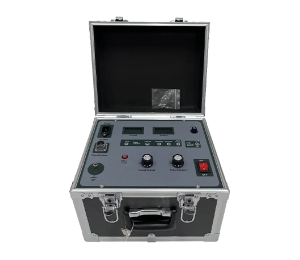 English
English


capacitance and tan delta
Understanding Capacitance and Tan Delta Key Concepts in Electrical Engineering
Capacitance and tan delta are crucial concepts in the field of electrical engineering and materials science, particularly when assessing the performance of capacitors and insulators. Understanding these concepts is essential for engineers and technicians who work with electrical systems, as they directly relate to the efficiency and reliability of various components.
Capacitance Defined
Capacitance is the ability of a system to store an electrical charge. It is typically measured in farads (F), with common subunits including microfarads (µF) and picofarads (pF). Capacitors are devices designed to store electrical energy in an electric field, created by the separation of charges. When a voltage is applied across a capacitor, it collects and holds charge, releasing energy when needed. Capacitance is influenced by the physical characteristics of the capacitor, including the surface area of the conductive plates, the distance between them, and the dielectric material that separates them.
The capacitance of a capacitor can be calculated using the formula
\[ C = \frac{\varepsilon \cdot A}{d} \]
where \( C \) is the capacitance, \( \varepsilon \) is the permittivity of the dielectric material, \( A \) is the area of one of the plates, and \( d \) is the distance between the plates. This relationship highlights how the choice of materials and the design of the capacitor can significantly impact its performance.
Tan Delta The Loss Factor
Tan delta, or the dissipation factor, is a dimensionless quantity representing the losses in a capacitor due to leakage currents and dielectric losses. It provides insight into the efficiency of a capacitor; the lower the tan delta, the better the performance of the capacitor. Tan delta is defined as the ratio of the resistive (loss) component to the reactive (storage) component of the impedance in a capacitor.
capacitance and tan delta

Mathematically, tan delta can be expressed as
\[ \tan \delta = \frac{I_{loss}}{I_{reactive}} \]
where \( I_{loss} \) represents the current due to energy loss, and \( I_{reactive} \) indicates the current that is used for storing energy. A high tan delta value implies that a significant portion of the energy supplied to the capacitor is dissipated as heat, which can lead to inefficiency and overheating.
Importance in Practical Applications
In practical applications, particularly in power electronics and electric motor applications, both capacitance and tan delta play vital roles. Capacitors must not only have the appropriate capacitance for effective energy storage but also exhibit low tan delta values to minimize energy losses and ensure reliability.
Monitoring tan delta is especially important in high-voltage systems. High levels of tan delta can be indicative of aging materials or defects in insulation, which may lead to catastrophic failures if not addressed. Therefore, regular testing and monitoring of both capacitance and tan delta are recommended to maintain the performance and safety of electrical systems.
Conclusion
In conclusion, capacitance and tan delta are fundamental parameters that influence the efficiency and reliability of capacitors and insulating materials in electrical systems. Understanding these concepts empowers engineers to design better components and maintain the integrity of electrical systems, ultimately advancing technology and improving energy efficiency in various applications.
-
Differences between open cup flash point tester and closed cup flash point testerNewsOct.31,2024
-
The Reliable Load Tap ChangerNewsOct.23,2024
-
The Essential Guide to Hipot TestersNewsOct.23,2024
-
The Digital Insulation TesterNewsOct.23,2024
-
The Best Earth Loop Impedance Tester for SaleNewsOct.23,2024
-
Tan Delta Tester--The Essential Tool for Electrical Insulation TestingNewsOct.23,2024





